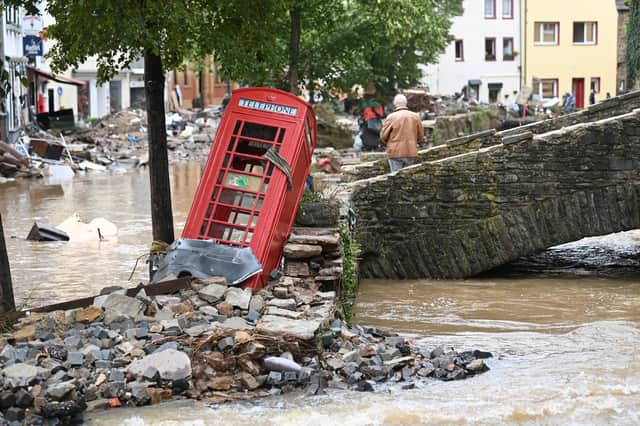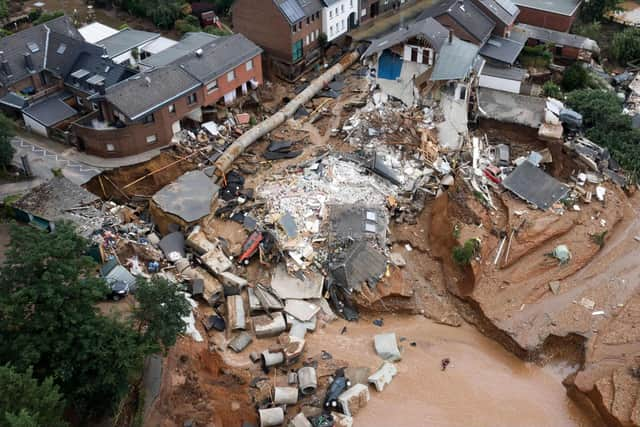Germany flooding: A 'historic catastrophe' that shows just how dangerous climate change really is – Scotsman comment


However, they subsequently decided this threshold was too high and, by the time the Paris Agreement was signed in 2015, the goal was moved to limiting the increase to as close to 1.5C as possible.
Clearly, the definition of “dangerous” is a subjective one, but it was based on scientific research into the various effects of climate change – rising sea levels, the increased power of storms, heavier rainfall and associated flooding, drought, wildfires, the disruption of whole ecosystems and species extinction.
Advertisement
Hide AdAdvertisement
Hide AdThere have been a number of extreme weather events in the years since, including wildfires in Australia and the US West Coast, the searing heatwave that affected much of the US and Canada in recent weeks, and now the astonishing floods in Western Europe, particularly Germany and Belgium.
More than 120 people were confirmed to have died by yesterday evening, with reports of hundreds more who were unaccounted for. The hope was that the massive damage to infrastructure in the area, which has affected mobile phone reception and internet connections, meant that most of these people were still alive but had simply been unable to make contact.
In addition to countless wrecked houses and buildings, cars strewed about like toys, wrecked roads, and collapsed bridges, supplies of running water and electricity have been cut off in some areas.
Malu Dreyer, the governor of Rhineland-Palatinate state, described the damage as “so dramatic and enormous that we will have to deal with this issue for a long time to come”. “Climate change isn't abstract any more. We are experiencing it up close and painfully,” she said. Her counterpart in North Rhine-Westphalia, Armin Laschet, said it was a “catastrophe of historic proportions”.


German President Frank-Walter Steinmeier said he was "stunned" by the extent of the damage. “In the hour of need, our country stands together,” he said. “It's important that we show solidarity for those from whom the flood has taken everything.”
This is what climate change looks like even before we have reached 1.5C of warming, a threshold that we are almost certain to exceed. How much more “dangerous” do we want it to get?
A message from the Editor:
Thank you for reading this article. We're more reliant on your support than ever as the shift in consumer habits brought about by coronavirus impacts our advertisers.
If you haven't already, please consider supporting our trusted, fact-checked journalism by taking out a digital subscription.
Comments
Want to join the conversation? Please or to comment on this article.
